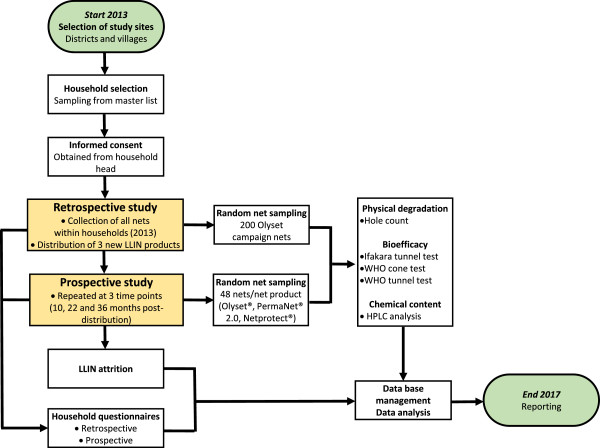Figure 1.

Flow chart of retrospective and prospective data collection. After study district and village selection, 45 households will be randomly selected from each village for study inclusion. After obtaining national ethical approval, community sensitisation meetings will be held and written informed consent will be obtained from each household head participating in the study. In the retrospective study in 2013, all nets from study households will be removed after an in-depth household questionnaire and 200 Olyset campaign nets will be sub-sampled for laboratory analysis of LLIN durability components (Table 1). All collected nets will be replaced with one of three new LLIN products; Olyset®, PermaNet®2.0 and Netprotect® (Table 2) for the prospective study. Ten, 22 and 36 months post-distribution, every household will be followed up with a questionnaire and the presence of each study net will be affirmed to obtain attrition estimates. A random sub-sample of 48 nets per net product will be collected for subsequent analyses consisting of Ifakara Tunnel Tests, hole counts, biological efficacy tests and HPLC analysis.
